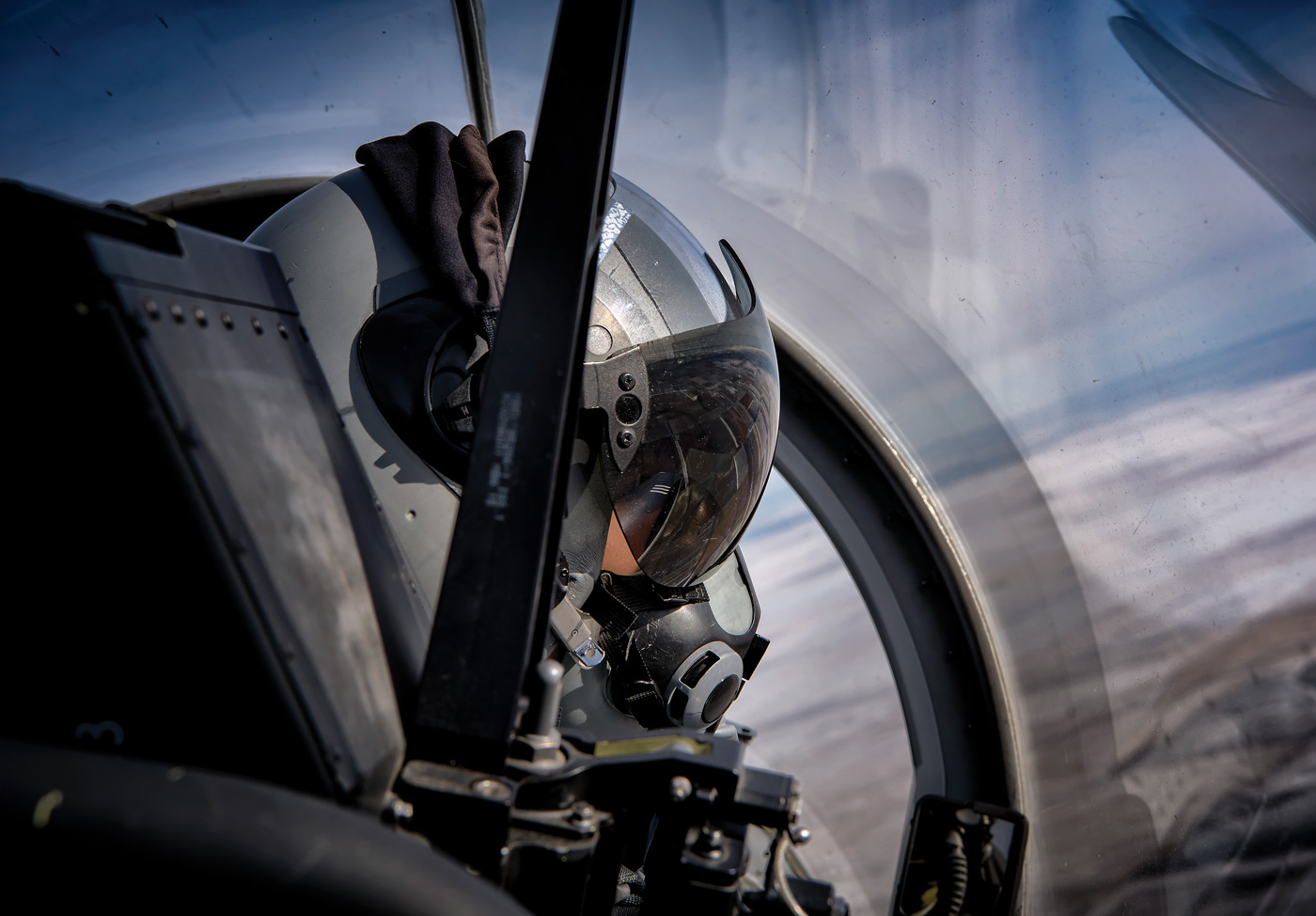Estimated reading time 16 minutes, 17 seconds.
Rarely in the life of a large, complex military program do you get the opportunity to reshape it from the ground up. But with two pilot training contracts coming to an end in the mid-2020s, the Royal Canadian Air Force (RCAF) is taking advantage of the moment to “reimagine how we are doing training,” said Col Pete Saunders, director of Air Simulation and Training.

RCAF pilots obtain their wings through two contracted training services, Contracted Flying Training and Support (CFTS) and NATO Flying Training in Canada (NFTC), delivered from two schools in Manitoba and Saskatchewan: 3 Canadian Forces Flying Training School (3 CFFTS) at the Southport Aerospace Centre in Portage la Prairie and 2 Canadian Forces Flying Training School (2 CFFTS) at 15 Wing Moose Jaw.
CFTS, delivered by Allied Wings and led by KF Aerospace, ends in 2027 while NFTC, provided by CAE Military Aviation Training, runs until December 2023, with the option for a one-year extension–the program was recently extended from 2021.
At same time, the RCAF would like to transition in-house training of its air combat systems officers (ACSO) and airborne electronic sensor operators (AESOp) to the same program as pilot training, a move partially driven by the end of service life of their primary training platform, the Dash-8 “Gonzo” in 2028.
“There are things we have done really well, things we probably wouldn’t do that way again, so this is an opportunity to re-baseline everything,” said Saunders.
By concentrating all aircrew training under one program, the RCAF is requesting one of the more comprehensive and ambitious industry-managed programs worldwide, from courseware and training devices to aircraft and maintenance, instructors and facilities management.
The Future Aircrew Training (FAcT) program hasn’t yet released an official price tag, but with NFTC worth about $3.8 billion over 25 years and CFTS valued at $1.8 billion over 22 years, the eventual contract could exceed $10 billion over 20 plus years.
More than 80 companies initially expressed interest in the program and five have been down-selected to offer bids when a request for proposals is released in early 2020: Airbus Defence and Space, Babcock Canada, Leonardo Canada, Lockheed Martin Canada, and SkyAlyne Canada, a joint venture between the two incumbents, CAE and KF Aerospace. A sixth qualified bidder, BAE Systems, withdrew in April.
What they will be asked to bid on boils down to a single word: Output. In presentations to industry over the past two years, Saunders has stressed, “it is not an aircraft acquisition program, it is a training service, [and] what we are contracting for is output. How a successful supplier gets there, I am not that fussed. What I care about is the output.”
And that is a straightforward demand: 120 pilots, 40 ACSOs and 36 AESOps, plus or minus 15 per cent, to a defined standard every year. The flexibility to ramp up or down is intended to deal with shortages–the RCAF is at about 82.6 per cent of manning or around 275 pilots short at the moment–the introduction of new fleets like remotely-piloted aircraft systems (RPAS), and the transition from legacy to new airframes when throughput may not be as high.
The numbers are based on demographic shifts and forecasted attrition rates, a “sweet spot” that acknowledges the fact the newer generations may be less likely to enroll for a 25-year career, he said.
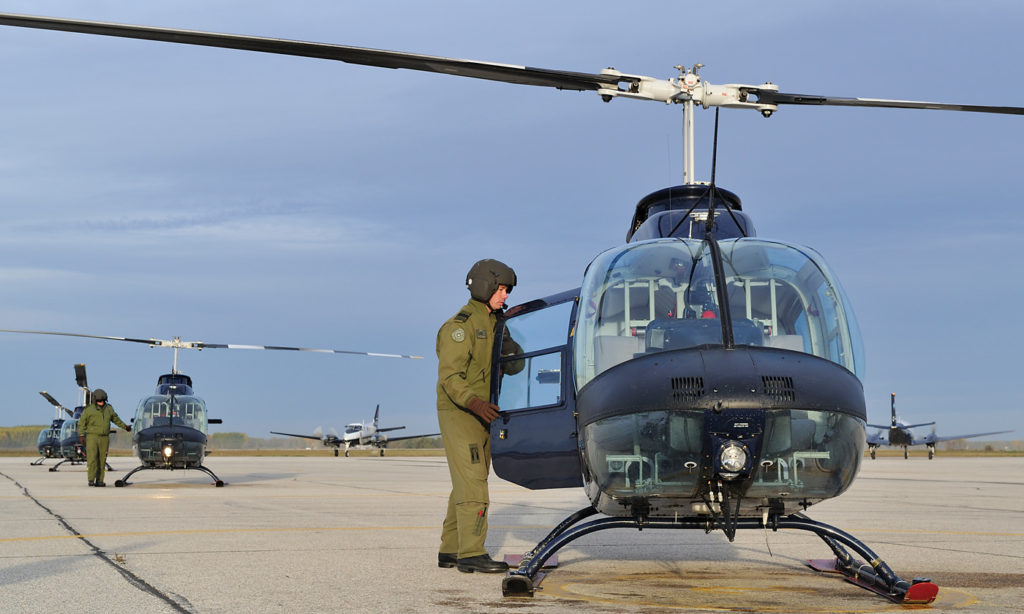
The Air Force also wants a program adaptable to technological change as both training systems and teaching methodologies evolve. “Our existing programs are delivering exactly what we are asking for, but they don’t have that flexibility baked into them, which then handcuffs the contractor who would love to do things slightly differently, but it comes at a certain cost,” said Saunders.
FASTER WINGS
The current training system produces around 100 to 115 pilots each year for the RCAF’s fleets of multi-engine, rotary wing and fighter aircraft. Though the schools delivered a record 116 pilots in 2016, the number has been scaled back to 107 for 2018 to manage a bottleneck developing at many of the operational training units (OTU).
The Air Force revised its selection process about five years ago, from a series of aptitude tests and hand-eye coordination simulators to a computer-based assessment purchased from the Royal Air Force, and has seen a significant drop in its overall attrition rate from about 15 per cent to six to eight per cent.
On average, 155 students from a pool of almost 1,200 are selected for the four-phase program that begins with primary flight training on the Grob 120-A in Portage la Prairie. About 130 advance to Phase II in Moose Jaw for basic flight training on the CT-156 Harvard II turboprop–an additional 10 often remain on the Grob if there is a capacity issue with the Harvard or they suffer from air sickness on the faster aircraft and are likely going to become helicopter pilots.

At the end of Phase II, students are streamed into multi-engine, rotary wing and fast jet. Approximately 35 multi-engine and 60 helicopter candidates will return to Portage for Phase III advanced flight training on the Raytheon King Air C-90B or the Bell CH-139 Jet Ranger and Bell 412 while around 30 remain in Moose Jaw for advanced fighter training on the CT-155 Hawk, learning advanced aerobatics, instrument flying, and tactical formation flying.
With Wings proudly pinned to their uniforms, multi-engine and rotary-wing pilots are assigned to operational training units while fighter pilots move on to Phase IV, also known as Fighter Lead-In Training (FLIT), still on the Hawk but at 419 Tactical Fighter Training Squadron at 4 Wing Cold Lake, Alta.
The Air Force is also in the process of analyzing the options for a future FLIT program, but has opted to separate FAcT from the more specialized FLIT requirements.
One of the many objectives of FAcT will be to stream pilots earlier in the process, rather than waiting until the end of basic flight training after Phase II. In preparation for a new program, the RCAF has revised the qualification standards for all its aircrew trades, but especially for pilots to reflect the mission management component of flying more data-generating aircraft.
“There will be a basic flying training phase for all pilots. And then as early as possible, we want to stream them between rotary and fixed-wing,” said Saunders. “Then rotary folks will go off and do their basic rotary training and advanced training, be that on one aircraft or two aircraft. On the fixed wing stream, there will be [additional training] and then they will split again between fast jet and multi-engine.”

Whether that is delivered as four distinct phases has yet to be defined, he said, but the Air Force has been working with potential bidders through workshops to develop the training plan. “As long as they meet the standard we have laid out, how we get there will be unique to each one of these qualified suppliers.”
The Air Force recently adjusted its training plan to a block approach where student performance is measured by passing certain gates rather than following a linear progression. “The result has been very positive in that we’ve reduced our extra do-overs, our extra training by half,” said Col Denis O’Reilly, commander of 15 Wing Moose Jaw.
By allowing students to focus on areas where they know they need the work and giving them more input into their flights, “it has decreased attrition rates and increased student confidence,” he said. “That has allowed us to use these hours more wisely… [I]nstructors are more successful on every trip they take a student on.”
ACSOs and AESOps will remain in Winnipeg, but bringing them under the same training program is intended to capitalize on the fact that much of the basic courseware is common to both pilots and systems operators.
Specialized training for future RPAS pilots and weapon systems operators will be done at an OTU, but the initial skills will be to the same standard as other aircrew, said Saunders. “If we determine that the nature of the work is so different that it requires a change in the qualification standard or that we need to make a different stream, then we will have the ability to do that.”
The CFTS and NFTC programs are delivered with a mix of 12 Grobs, seven King Airs, 10 Jet Rangers, nine 412s, 22 Harvards and 17 Hawks, and all have an availability rate of over 90 per cent. And at 17,600 hours per year, no one flies Harvards more than Canadian pilot candidates.
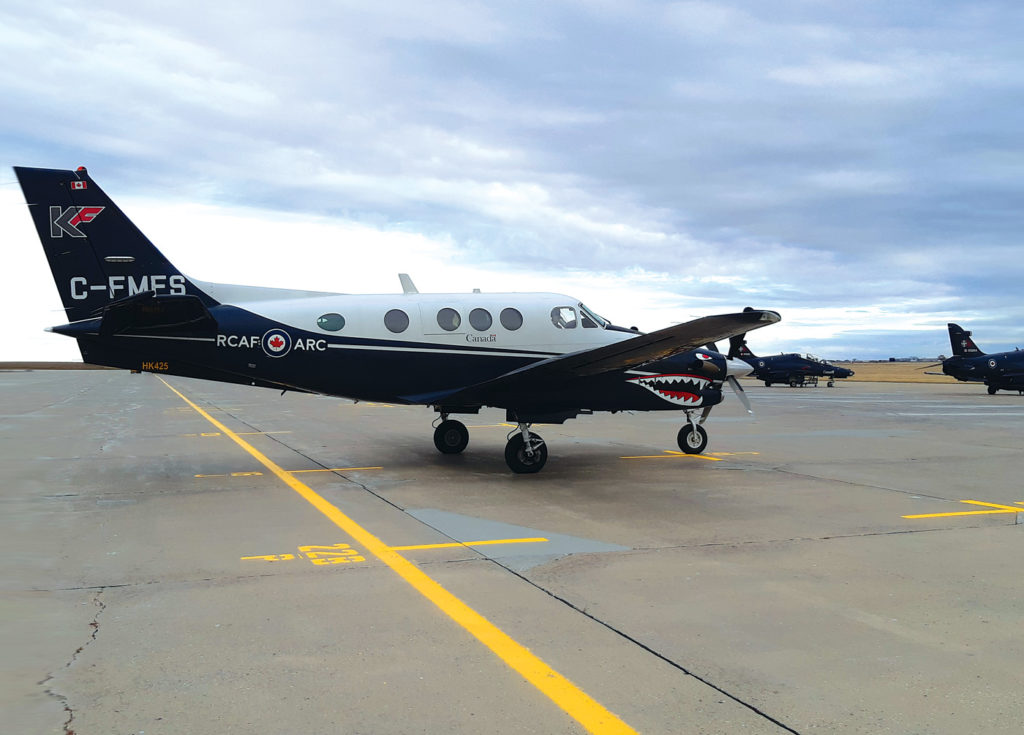
However, Saunders has told industry not to assume access to any of the current training fleets. “The [18-year-old] Hawks and the Harvards have done a great job and we’re pretty confident they will be fine to the end of the contracts,” he said. “But we put a lot of abuse on them. Let’s just say pilot training is not kind to aircraft. So those aren’t going to be available. Similar with the rotary wing aircraft. We are seeing a clean slate. I’m not telling [qualified bidders] which airplane … as long as it achieves my training objectives.”
TRAINING INNOVATION
In 2015, the RCAF released a long-term simulation strategy intended to “transform [the] training system from one that relies on aircraft to one that exploits new technologies to train aviators in a simulation-focused system that creates, in effect, a ‘virtual battlespace’.” Leveraging the latest in technology is still an Air Force goal, but the RFP for FAcT will not prescribe percentages for live flying versus simulation training.
“We haven’t given them a specific ratio,” said Saunders. “We spoke with allies who have introduced programs over the last couple years, and looked at our own experience on the CH-148 Cyclone and the CH-147 Chinook, where we have more modern simulators, and said, ‘Is there a sweet spot?’ I can’t say there is a consensus out there.”
Rather, the Air Force has looked at its performance objectives and tried to determine how many can be completed in a simulator. “Our initial cut is probably more flying hours than we are currently getting,” he admitted.
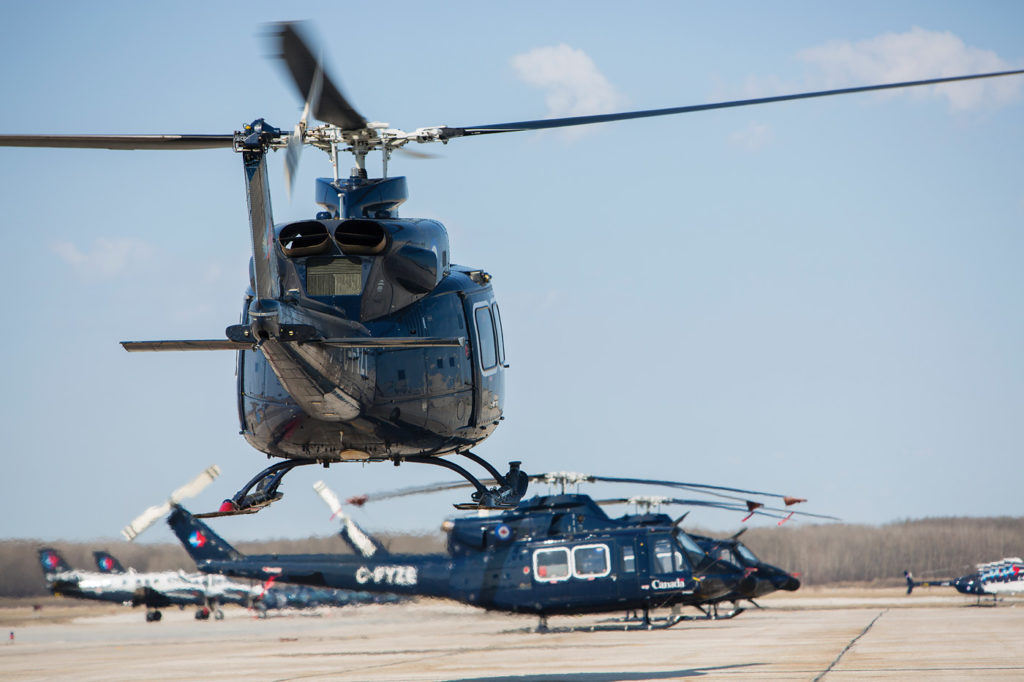
Because the Air Force also wants to push more training down from the OTUs to the pre-Wings phase of a pilot’s development–skills like VFR navigation, night vision systems, and formation flying operating with night vision goggles–Saunders also expects the number of simulator hours to increase. “I want to teach the whys and hows and get them comfortable trusting these things on a much less expensive aircraft,” he said.
At present, the majority of simulation flying is done during Phase III of rotary wing (42%) and multi-engine (59%) training. Peter Fedak, a former commanding officer of 3 CFFTS and the site manager for Allied Wings in Portage, said the “pendulum has swung back a bit” when it comes to simulation. The school recently acquired an advanced simulator for the Bell 206, but instead of replacing hours one-for-one, “we are trying to use the sim to the best of its ability and seeing how many things we can take out of the aircraft.” In fact, the changes added five days to the training curriculum.
However, the Air Force will be looking to industry for ideas and technologies to improve how students learn. O’Reilly noted training is expensive and industry is well ahead of the military on new methodologies. “I don’t think we can be closed minded about it,” he said.
Added Saunders: “That is where I think we are going to see the largest differentiator between bidders, is in how they want to get somebody from point A to point B using some of these more advanced technologies. But it has to be cost-effective. I’ve been very clear that this is not a developmental program. Canada can’t be the guinea pig in terms of new and unproven technology.”

CONTRACTING EXPERIENCE
All the improvements to the training system won’t matter much if the operational training units are unable to absorb Winged pilots more quickly. At present, the Air Force has a bottleneck at most OTUs due to challenges retaining experienced pilots and an operational tempo that has pulled veteran instructors from most fleets for deployments.
That has resulted at times in lengthy delays for some young pilots, observed Fedak. “The gap is longer than we would like and we are seeing some fade and a lot of returns. Because of that wait, we have had to do refresher training for a lot of people who we would love to never see again, unless they come back as instructors.”
Saunders said the ideal wait is no more than six months to finish advanced training and then move, get settled, complete some ground school and begin flying at an OTU. “That is motivating and it’s also efficient.”
As part of FAcT, the Air Force is open to more contracted flight instructors. While industry under both the CFTS and NFTC provides simulator-based instruction, live flying has remained the purview of the military, a commitment that requires around 130 instructors in both locations, said O’Reilly.

“The intent is to allow the OTUs to be better staffed from a uniform perspective, which is where I really need those instructor pilots,” said Saunders. As the former commander of 406 Maritime Operational Training Squadron in Shearwater, N.S., when the Cyclone was introduced, he relied on a dozen serving and contracted instructors to manage the conversion from the CH-124 Sea King to the Cyclone.
“Half of those are probably contracted flight instructors on any given day, and you would not be able to tell who is who,” he explained. “My focus at the time was to create that one team, one standard, one mission approach. There were things the contracted folks don’t teach–tactics that are a classification level beyond what they hold–but they definitely teach everything up to that point, interspersed with our uniform flight instructors.”
Transitioning from a program managed by two companies to a single provider of what are now three distinct programs won’t be straightforward, even if the winner is the joint venture of CAE and KF Aerospace. Though the two companies have been “very responsive” managing an inter-related program, ensuring the right number of aircraft are on the line each day, students transfer back and forth and “an issue with one creates a ripple effect with the other,” noted Saunders. “These are different companies under different contracts with different metrics, so just by the very nature of it, it creates a challenge.”
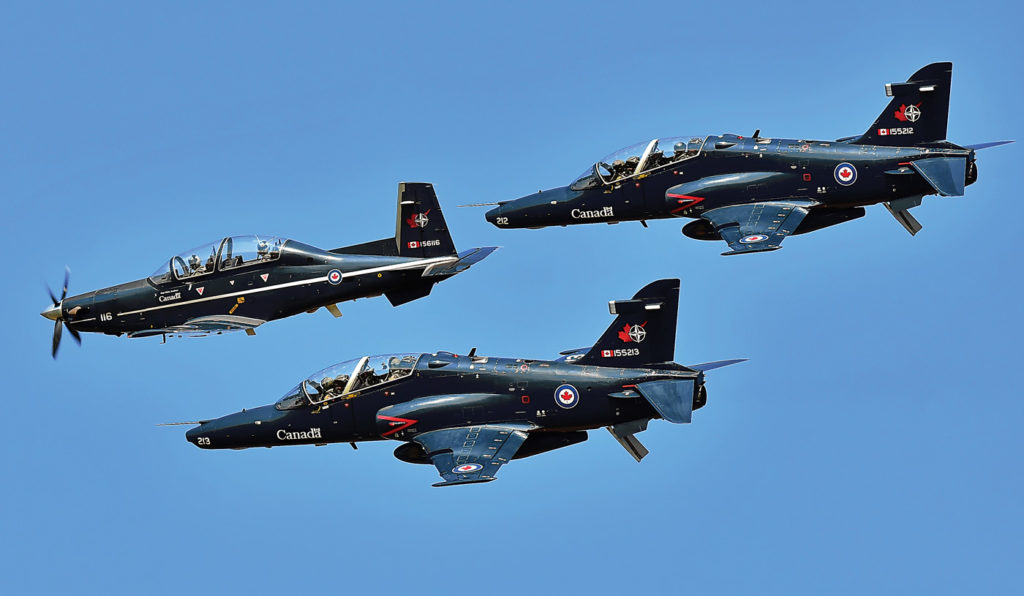
The RCAF, however, has experienced enough fleet transitions in recent years to “have learned what things work well,” he said. Through a series of workshops with industry on everything from training plans, to aircraft, to infrastructure that will extend into the fall, the Air Force hopes to present an RFP in early 2020 that is well understood and not subject to unexpected delays.
“I’ve said, ‘I know it isn’t going to be a cheap program, but tell me if there is something we are asking for that is going to create a significant cost driver’,” he said.
To date he has been getting that type of feedback. Potential bidders, for example, have raised questions about his contention flying hours may increase. “We have provided our rationale based on what we’ve learned from our allies, but we are not being prescriptive, we are saying this is what we see as a benchmark. And if you are telling me something different, tell me why.”
The Air Force created two documents, Concept of Training and Concept of Training Support, to guide prospective vendors through the current process, from weather and number of flying days in both locations to meals and accommodation. “I would argue by the time the RFP comes out, most people would have their bids in a 95 per cent completion state because we have been working with them all the way through,” he said.
Among other measures, the Air Force will stand up a Training Implementation Working Group led by 2 Canadian Air Division to monitor the process and assess the implications of various decisions once a contract is awarded in 2021.
“It will be very complicated,” but when you have that rare opportunity to makes changes, you need to seize it, he said.
